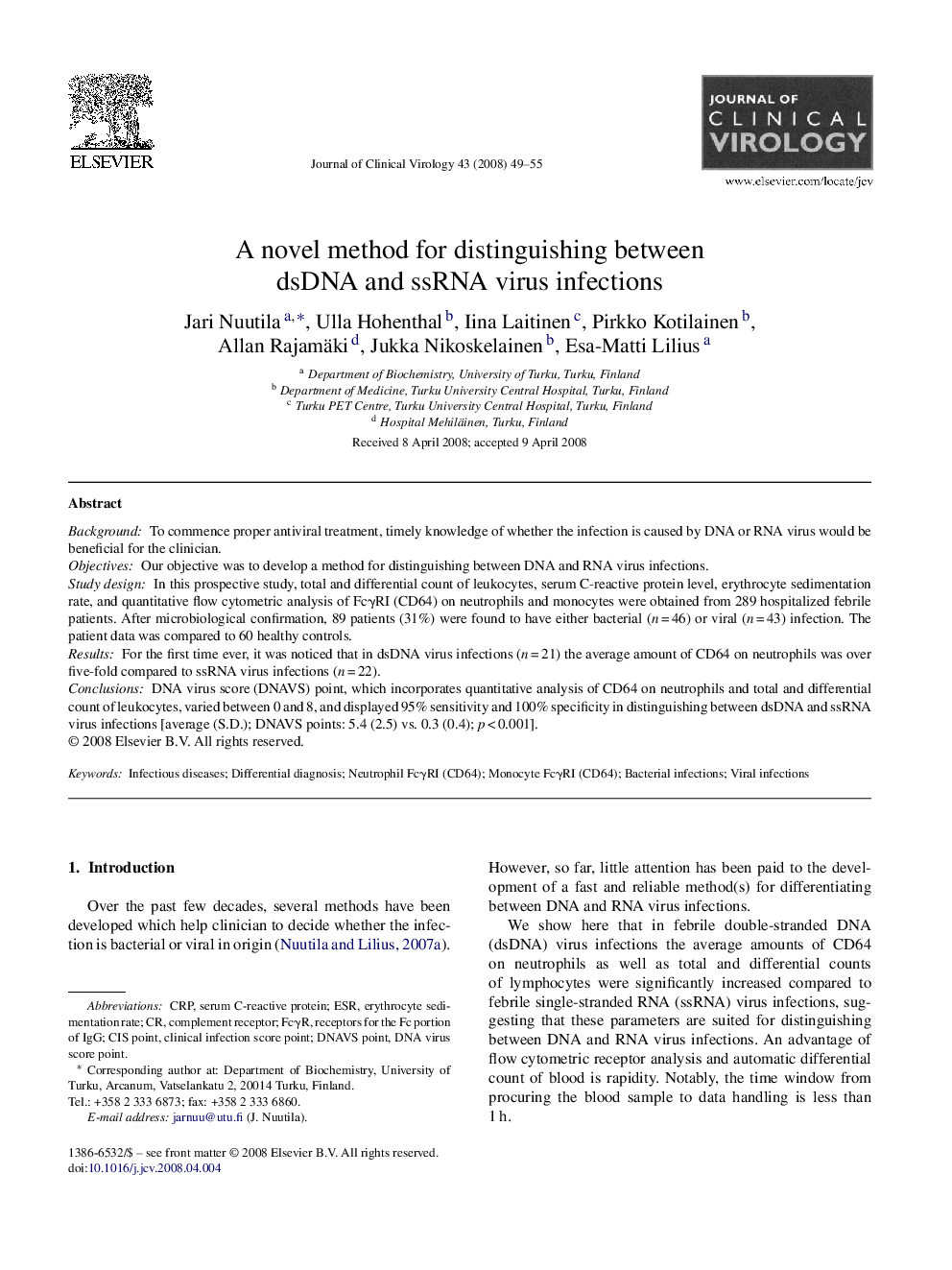| Article ID | Journal | Published Year | Pages | File Type |
|---|---|---|---|---|
| 3370103 | Journal of Clinical Virology | 2008 | 7 Pages |
BackgroundTo commence proper antiviral treatment, timely knowledge of whether the infection is caused by DNA or RNA virus would be beneficial for the clinician.ObjectivesOur objective was to develop a method for distinguishing between DNA and RNA virus infections.Study designIn this prospective study, total and differential count of leukocytes, serum C-reactive protein level, erythrocyte sedimentation rate, and quantitative flow cytometric analysis of FcγRI (CD64) on neutrophils and monocytes were obtained from 289 hospitalized febrile patients. After microbiological confirmation, 89 patients (31%) were found to have either bacterial (n = 46) or viral (n = 43) infection. The patient data was compared to 60 healthy controls.ResultsFor the first time ever, it was noticed that in dsDNA virus infections (n = 21) the average amount of CD64 on neutrophils was over five-fold compared to ssRNA virus infections (n = 22).ConclusionsDNA virus score (DNAVS) point, which incorporates quantitative analysis of CD64 on neutrophils and total and differential count of leukocytes, varied between 0 and 8, and displayed 95% sensitivity and 100% specificity in distinguishing between dsDNA and ssRNA virus infections [average (S.D.); DNAVS points: 5.4 (2.5) vs. 0.3 (0.4); p < 0.001].
